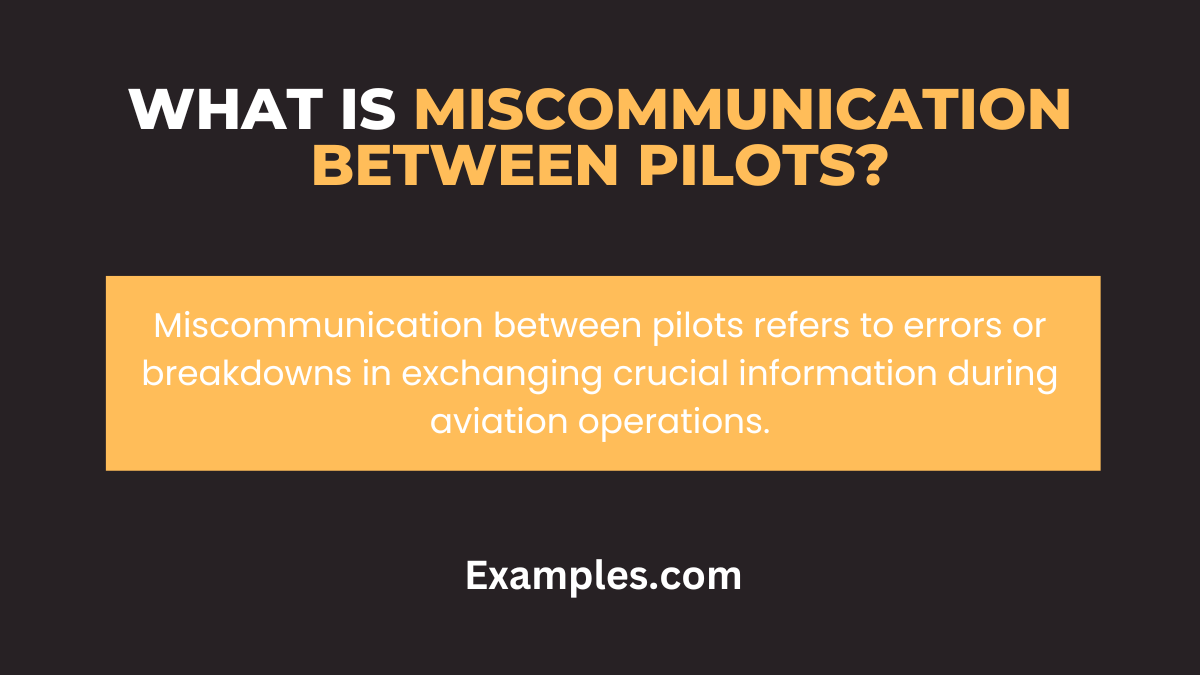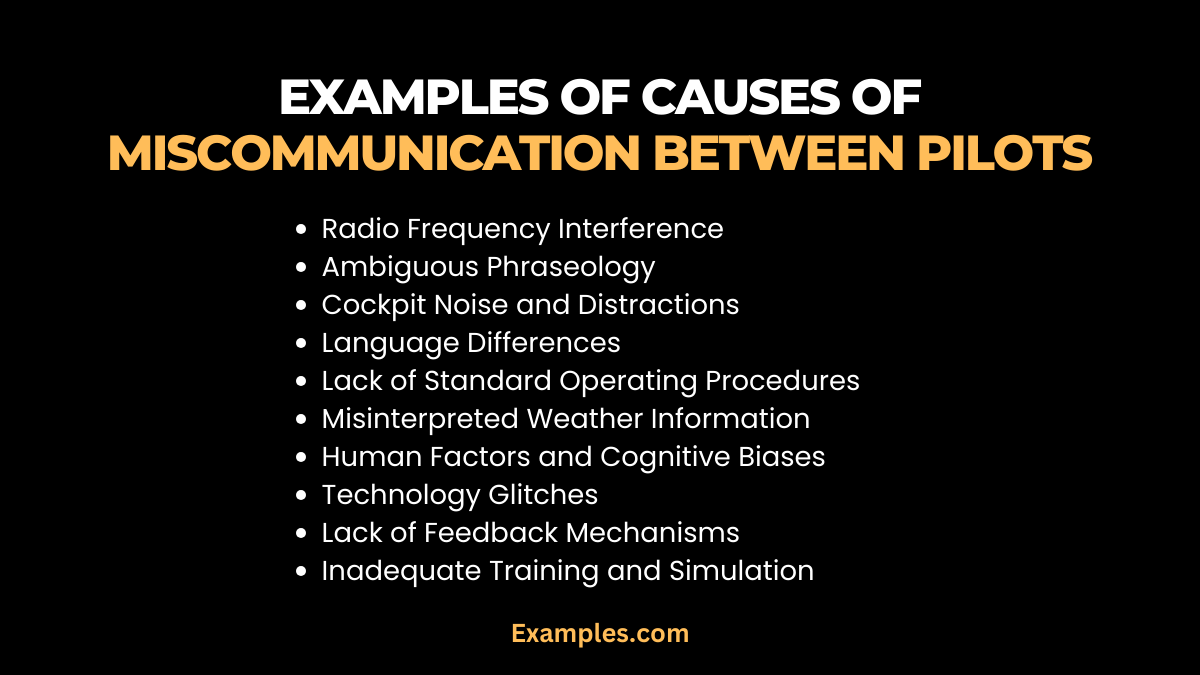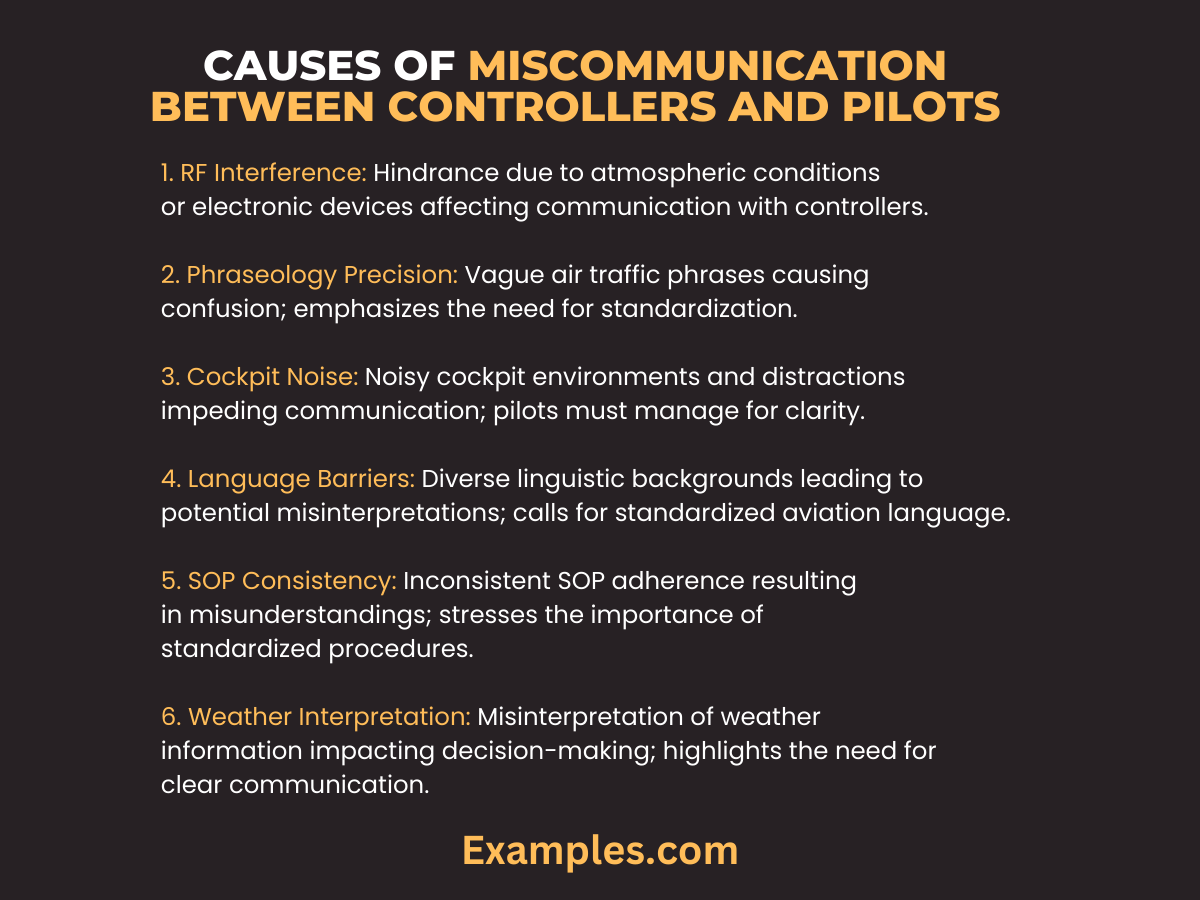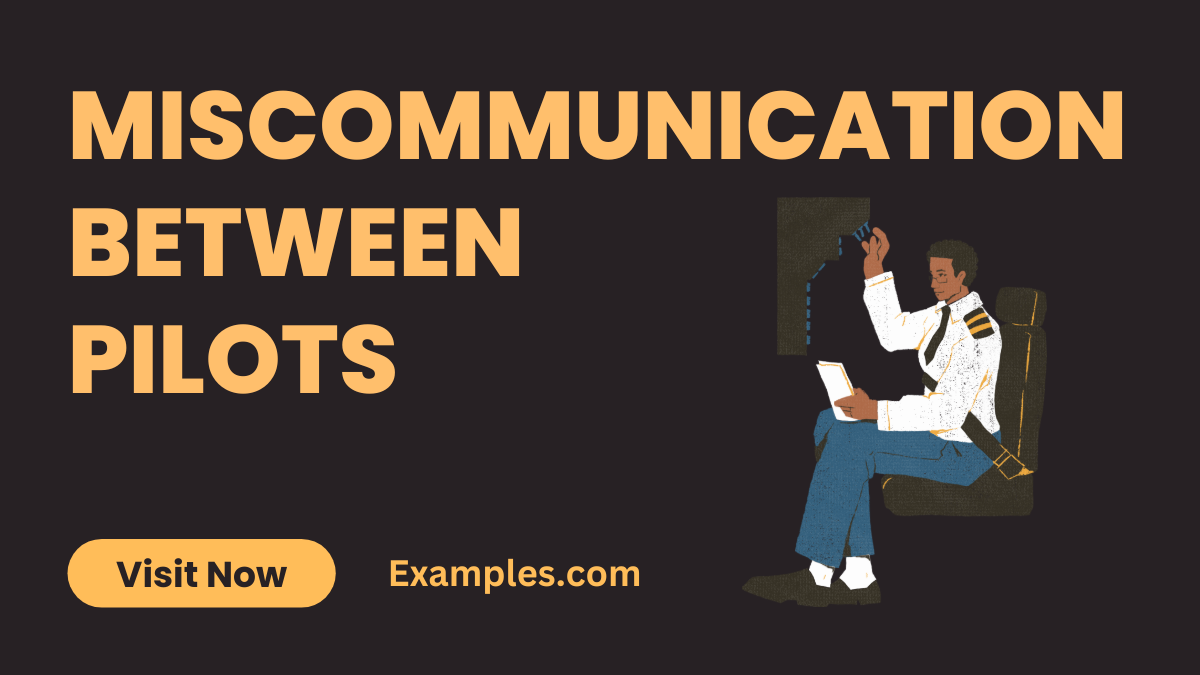9+ Miscommunication between Pilots Examples
Embark on a comprehensive exploration of “Miscommunication between Pilots,” delving into real-life instances that underscore the importance of effective communication in aviation. This insightful guide navigates through critical scenarios, offering vivid Communication Examples that illuminate the challenges and solutions within the cockpit. Elevate your understanding of the intricacies surrounding pilot communication, ensuring a safer and more efficient journey through the skies. Join us on this in-depth journey into the heart of aviation communication.
What is Miscommunication between Pilots?

Miscommunication between Pilots refers to the breakdown in conveying or receiving information within the aviation context. In simpler terms, it involves misunderstandings or errors in communication that can occur between cockpit crew members during flight. This breakdown poses potential risks to flight safety. Clear communication is crucial for pilots to share critical information effectively, making the prevention and resolution of misunderstandings essential for safe and efficient air travel.
Examples of Causes of Miscommunication Between pilots

Explore the underlying reasons behind miscommunication among pilots. This unravels the complexities, providing insights into the intricacies that contribute to communication lapses within the cockpit.
Cockpit Noise: In loud environments, crucial instructions may be lost. For instance, an order to adjust altitude might be misheard.
Jargon Overload: Excessive use of aviation terminology can lead to confusion. Pilots may misinterpret each other, impacting coordination.
Cultural Differences: Diverse backgrounds among crew members may result in varied interpretations of instructions, potentially leading to errors.
Radio Interference: External signals can disrupt communication, causing pilots to miss vital information transmissions.
Assumption Errors: Pilots making assumptions about the other’s understanding can lead to incorrect actions, risking safety.
Incomplete Communication: Failure to relay full information may cause misunderstandings. For example, not specifying a change in flight plan can lead to confusion.
Cockpit Distractions: External factors diverting attention may result in overlooked communications, impacting situational awareness.
Lack of Standardization: Varying procedures among crew members can cause confusion, emphasizing the need for standardized communication protocols.
Language Barriers: Multilingual crews may face challenges in conveying and interpreting instructions accurately.
Ambiguous Phraseology: Unclear language usage can create confusion. A simple phrase like “cleared for landing” needs precise understanding to prevent errors.
Miscommunication between Pilots at Airport
Delve into the intricacies of miscommunication scenarios at the airport, where precise communication is paramount. Discover how misunderstandings on the ground can impact flight operations and safety.
- Taxiway Tango Confusion: Pilots may misunderstand directions, leading to confusion on taxiways, impacting efficient ground movements.
- Gate Assignment Misalignment: Miscommunication in gate assignments can result in congestion and delays during boarding and departure.
- Runway Clearance Uncertainty: Clarity in runway instructions is vital to prevent potential conflicts during takeoff and landing.
- Fueling Misunderstandings: Ambiguities in fueling instructions may disrupt the fueling process, affecting timely departures.
- Baggage Loading Coordination: Ineffective communication regarding baggage loading can lead to weight distribution issues, impacting flight balance.
- Emergency Procedure Confusion: Miscommunication in emergency procedures can compromise the timely response to critical situations.
- Weather Briefing Discrepancies: Varied interpretations of weather briefings may result in differing approaches to weather-related challenges.
- Ground Crew Coordination: Effective communication with ground crew is essential for smooth pre-flight preparations and departures.
- Aircraft Pushback Protocol: Misunderstandings in pushback instructions can lead to unsafe maneuvers on the tarmac.
- Navigational Misalignment: Inaccurate communication on navigation procedures may result in deviations from planned routes.
Miscommunication Between Pilots in Flight
Navigating the skies demands precise communication. Explore the complexities of Miscommunication Between Pilots in Flight, where misunderstandings pose serious risks. This comprehensive guide offers practical solutions and real-world examples, shedding light on the challenges pilots face in ensuring clear and effective communication during flight.
- Radio Jargon Jumble:
- Explanation: In the heat of a situation, jargon can lead to confusion.
- Altitude Ambiguity:
- Explanation: Clear altitude communication is crucial to avoid mid-air collisions.
- Weather Code Confusion:
- Explanation: Different interpretations of weather codes can impact flight safety.
- Cockpit Instrument Misread:
- Explanation: Misinterpreting instrument readings can lead to navigational errors.
- Runway Mix-up:
- Explanation: Confusion in runway instructions can result in hazardous situations.
- Time Zone Mismatch:
- Explanation: Failing to sync time zones can disrupt flight schedules.
- Fuel Quantity Misreport:
- Explanation: Incorrect fuel information can jeopardize a safe landing.
- Language Barrier Blunders:
- Explanation: Language differences may lead to misunderstood commands.
- Emergency Procedure Misalignment:
- Explanation: Miscommunication during emergencies can escalate risks.
- Navigational Point Misidentification:
- Explanation: Identifying wrong points can divert the aircraft off course.
What are the Causes of Miscommunication between Controllers and Pilots?

Effective communication is the lifeline of aviation, but miscommunication between controllers and pilots can lead to serious consequences. Understanding the root causes is crucial for enhancing air traffic safety.
1. Radio Frequency Interference:Pilots may encounter interference, hindering clear communication with controllers. Factors like atmospheric conditions or nearby electronic devices can contribute to signal disruptions.
2. Ambiguous Phraseology:The use of vague or misunderstood phrases in air traffic communications can lead to confusion. Standardizing phraseology is essential for clarity and precision.
3. Cockpit Noise and Distractions:Noisy environments within the cockpit, combined with distractions, can impede communication. Pilots must manage these factors to ensure clear transmission and reception.
4. Language Differences:Diverse linguistic backgrounds among controllers and pilots may result in misinterpretations. A standardized language for aviation communication is crucial for overcoming language barriers.
5. Lack of Standard Operating Procedures (SOPs):Inconsistencies in following SOPs can lead to misunderstandings. Establishing and adhering to standardized procedures is vital for streamlined communication.
6. Misinterpreted Weather Information:Weather-related information may be misinterpreted, impacting decision-making. Clear and concise weather communication is essential for pilot awareness and preparedness.
7. Human Factors and Cognitive Biases:Psychological factors, such as stress or cognitive biases, can affect communication. Recognizing and mitigating these factors is key to preventing miscommunication.
8. Technology Glitches:Technical issues, such as equipment malfunctions or software glitches, can disrupt communication. Regular maintenance and technological advancements are crucial for minimizing these risks.
9. Lack of Feedback Mechanisms:Insufficient feedback between controllers and pilots can hinder improvement. Establishing effective feedback mechanisms promotes continuous learning and refinement of communication practices.
10. Inadequate Training and Simulation: – Limited exposure to realistic scenarios during training may contribute to miscommunication. Intensive simulation exercises can better prepare both controllers and pilots for real-world communication challenges.
In conclusion, this comprehensive guide unravels the intricacies of Miscommunication Between Pilots, offering a deep dive into real-world examples and practical solutions. From cockpit jargon to weather code complexities, understanding these instances is crucial for fostering effective communication and ensuring the safety of aviation. Elevate your awareness, learn from tangible examples, and navigate the skies with confidence.



